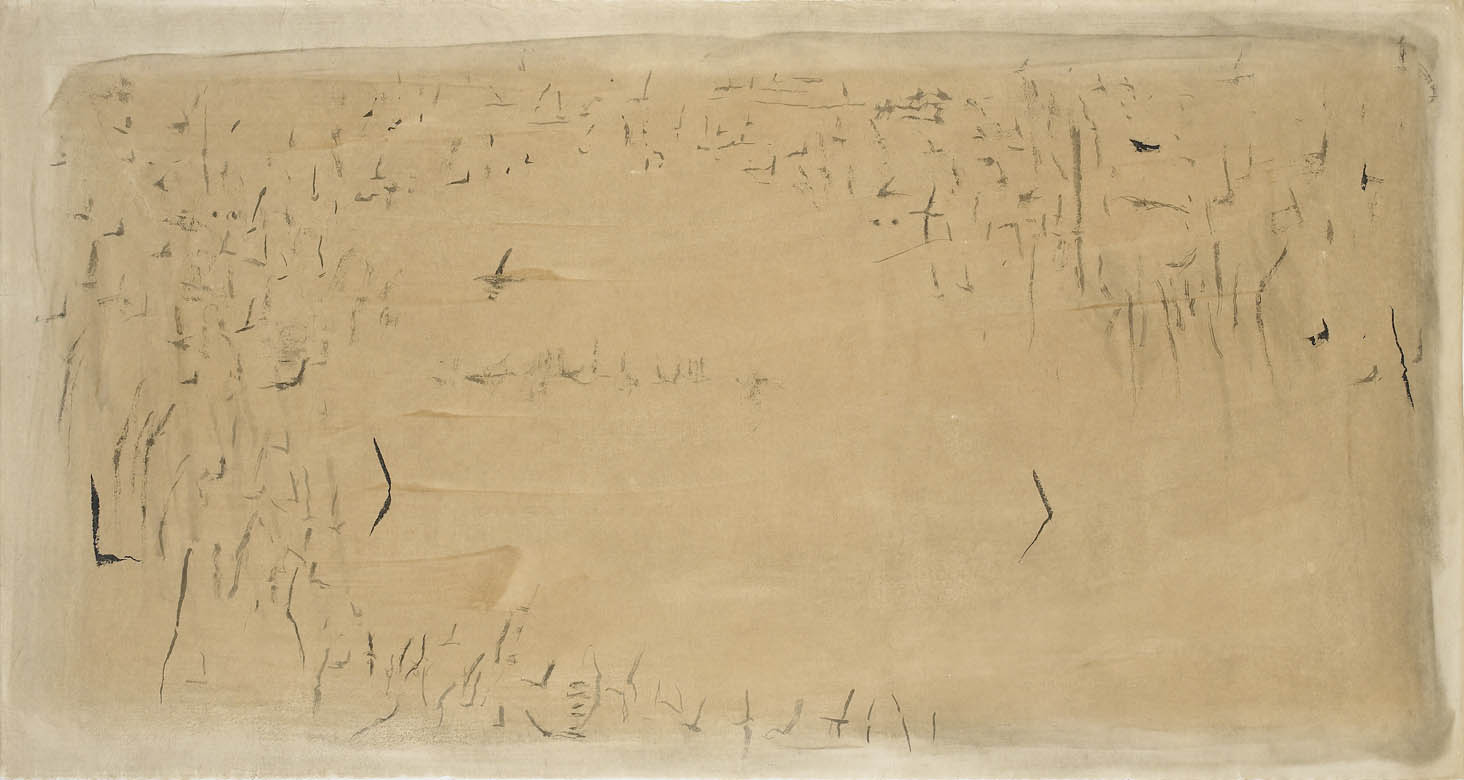Overview
The Clear-Toned and Cool Lyricism of Life
A Meditation on the Flow of Solitude and Silence as Embodied
by Bleak Scenery of Contemplation of Marshy Fields
Prof. Baik Gyun Kim | (Dept of Korean Painting, Chung-Ang University) Rhee Kyung-Ja has made contemplation of water the theme of her works ever since Siddhartha which was included in her first solo exhibition at the Dongduk Art Museum in 1980. Laotze said that the highest principle closely resembles water in that it benefits all but never becomes boastful, placing itself on lowly places detested by many. He concluded that water, therefore, is very close to Tao or way. Comparing life to water that gushes out of fountain and flows day and night to fill hollows before reaching the sea, Mencius taught that one must go forward going through various stages, finding and filling his hollows of weaknesses. The way of people is the same as the way of water, whose most striking property is continuous downward flow. Water silently teaches us that we must be humble at all times. As it encounters rocks or trees, water does not push them aside to make its way but goes around them. Water silently shows us the wisdom of living and moving forward following the way of nature, avoiding conflict and letting ourselves float with the currents of the world.
She was more interested in the waning rather than the birth of life in her series of works of "Contemplation of Marshy Fields" focusing on water as the main theme. The contemplation of the waning of life, which permeates all the works in the series of "Contemplation of Marshy Fields", has firmly established itself as the signature of the art world. The theme has attained such completeness in terms of form, and therefore is now considered to constitute her own art world. Some of the dried-up reeds or water plants stand intact, others stand broken and still, and others show their short tips above the water surface. Their reflections on the quietly rippling water below shake bizarrely. The saw-tooth patterns of the dried-up reeds reflected in the water add to a sense of the waning of life.
It is the law of nature that all life wanes following the vitality-filled apex of summer. Nature continues in cycle. As the rain that falls from the sky forms brooks on earth and the brooks pour into ponds (lakes Ponds seem to be too small to accommodate the flow of brooks/rivers and they do not flow at all), the water collected in the ponds goes to the sea and the sea water evaporates upward to the sky. All that has life is bound to grow weak and wane. The revival of life has joy, and the wane of life has sadness. If the revival of life is accompanied by passion, contemplation accompanies the wane of life. The contemplation on the wane of life includes meditation and the soul-searching philosophy to look back on one's life. Rhee's Contemplation of Marshy Fields transforms the lonely and desolate scenery of the life in marshes into a meditation on the flow of desolation and quietness.
Her works of fall and winter scenes are dedicated to the lyricism of clear-toned and cool life. Outwardly there is little excessive attachment or "sticky" affection and a lot of the heart of mundane life in her works. However, how could any life be free of such human sentiments. Hers are simply concealed behind the tip of her clear-toned and cool brushes. Behind the images that look desolate are many a life's footprint full of passion. Although the last of her pictures appear to keep a good distance from sensual things (sensual is this a proper adjective), their scenes of desolation are found to contain them. Her pictorial composition reminds us of the works by Ni Chan, a landscapist of late Yuan and early Ming China. Like the Chinese painter's works characterized by elegant refinement rendered by simple brushing, her works give out the artistic effect of openness and desolation with freely rendered shapes.
Compared with her former pieces, the blue-based works in the series of Contemplation of Marshy Fields are in a noticeably simpler form. This is a result of her agonizing search for the identity of Koreanness. Rhee says her agony over Koreanness has led her to view it simple and unaffected, and she found the clues to it in the Goryeo celadons. The beauty of Korea she has found is epitomized by the simple form and subdued hues of Goryeo celadons. She expresses Koreanness in her works, using the color blue and simple lines. Blue symbolizes life.
She has pursued her art world undeterred by the changes in abstruse and often confusing thoughts about modern Korean art history. Ranging form the lyricism of peaceful suburban scene and sun-light bathed forest at daybreak in her childhood to the revival and waning of life in marshes, her theme is full of meditation on awakening and dawn, and life and its cycle. In latest works, tinged with her freedom from the worldly things, her world is rendered more simply and leaves a longer reverberation. The waning of life in her works exudes a longing for revival and constitutes a metaphor of life.

